Archived Storm Damage Blog Posts
Weather and Your Business: Understanding that Flooding May be the Least of Your Concerns
11/11/2022 (Permalink)
Weather and Your Business
Many building owners worry about flood damage, but a flood is not the only problem caused by storms. Storms produce a variety of elements that can be equally unfavorable to a property, and as a property owner or manager, you may want to be aware of each.
1. Water Damage
Floodwaters are only one type of water damage, and it is not the most common. Most damage stems from persistent leaks or holes in your roofline. These issues cause significant loss to occur over time. Leaks can cause the sagging of ceilings, rotting out of joists, and even the spread of molds and mildews. Additionally, while not necessarily storm-related, persistent leaks from pipes can cause the pipe to corrode and fail, resulting in a flood.
2. Hail Damage
While flood damage can be a threat, hail damage may pose a more imminent concern. Hail occurs when temperatures allow for rain to develop into large chunks of ice, sometimes resulting in baseball size masses. These pieces of ice can cause significant property damage, from broken windows to holes in your roofline. Inspecting your property after a hail storm should be a top priority.
3. Wind Damage
The most common cause of storm damage is the wind. Wind damage can peel back siding and roofing shingles, and it can launch random debris, like sticks and lawn ornament, making them volatile projectiles. Property managers should keep employees and clients clear of windows in high-wind situations.
4. Renovating the Damage
It may be wise for property owners to plan ahead. Some restoration companies in Leawood, KS, provide an emergency planning service for businesses. This service may include an initial analysis of your property and a customized plan for restoration and recovery in the event of a disaster.
Flood damage may be a concern for a property owner or manager, but storms can produce hail and high winds that can equally damage property. Water damage is the most common cause of property damage, but even that is not only caused by flooding.
The Most Effective Sandbag Alternatives
10/26/2022 (Permalink)
Sandbags can be heavy and messy to fill. Commercial property owners seeking more convenient ways to limit flood damage should consider one or more of the following sandbag alternatives.
Absorbent Materials
Some materials are designed to absorb fresh or flood water and act as barriers. Several styles for absorbent flood control are currently available:
- Crystallized polymer
- Powder-filled barriers
- Self-inflating sand-less bags
These porous flood dams are intended for one-time use and should be disposed of after each flood event. All of these options are easier to deploy than sandbags.
Water-Filled Barriers
Filling a water barrier can be easier than filling a sandbag. There are several different styles of water-filled barriers to choose from:
- Baffle systems
- Cofferdams
- Modular blocks
- Tube designs
These designs are available in a wide range of sizes. Unlike some flood control materials with fillers that become contaminated, these barriers can be reused multiple times.
Self-Stabilizing Barriers
Self-stabilizing barriers are easy to use to keep flood waters away from a structure. Some of these options are better suited for blocking entrances or windows, while others can be set up in longer runs to keep flood water out of a larger area. Most of these designs can be reused many times.
Levee Machines
Machines are also available to quickly fill bags with sand. The same materials used to make sandbags are needed, with the exception of a shovel. It will also be necessary to either hire or train a crew to safely use this machinery prior to a flood.
All of these sandbag alternatives are relatively easy to use. A property owner may want to invest in a reusable flood prevention solution to limit the amount of water that enters a commercial structure in Leawood, KS. If water breaches the barriers and causes damage, contact a flood damage mitigation and restoration company.
Do You Need Business Interruption Insurance?
8/20/2022 (Permalink)
As a business owner, you know that insurance can save you in extreme circumstances. Business interruption insurance is no different. It encompasses the costs associated with keeping your business afloat when trying to rebuild after an unexpected event. Find out if you need this type of insurance in Prairie Village, KS.
What Is Business Interruption Insurance?
Business interruption insurance protects a temporarily closed business. Most commercial property owners know that property insurance is a necessity, but have you considered the potential costs of a temporary shutdown? Also known as business income insurance, this type of coverage doesn't deal with the physical rebuild of your business. For this, you need a trustworthy damage remediation team.
However, it does help with inevitable financial issues to keep you afloat. Being forced to close due to a disaster event can impact the costs associated with running a company. Some of the aspects that business income insurance can help with include:
- Employee pay
- Property taxes
- Loans
- Property rental fees
- Temporary relocation fees
- Training on new equipment
- Lost income
If your business comes to a halt, you won't be able to bring in as much income, if any. Based on your net income in previous months, this coverage can reimburse you, among other things.
What Should You Consider When Purchasing?
As with all insurance, there are aspects to consider before purchasing. Before signing up, you should assess:
- Budget constraints
- Natural disaster probability
- Age and reliability of structures
- Ability to operate without a physical location
Of course, with digital innovations, some businesses can survive a bit better by moving things online. You need to consider how well your business can handle a disaster, and adjust accordingly.
How Much Does It Cost?
The price of business income insurance will vary depending on a variety of factors. Some of these are:
- Size of business
- Industry-related risks
- Coverage limit selected
You can determine how much coverage you would need in the event of needing to close for a while. Have this at the ready when selecting business interruption insurance. However, this insurance can be a saving grace when times get tough.
How To Stay Safe During a Flood
6/22/2022 (Permalink)
 Plan ahead by assembling a portable flood preparedness kit
Plan ahead by assembling a portable flood preparedness kit
Flood Safety Guidelines
Flooding poses risks to residents of Overland Park, KS, as well as first responders. The following flood safety guidelines are helpful when preparing for flood conditions.
Follow Evacuation Orders
Residents should stay apprised of flooding risks and prepare to evacuate as soon as an order is issued. Plan ahead by assembling a portable flood preparedness kit that includes the following items:
- First aid kit
- Non-perishable food
- Water
- Flashlights and batteries
- Sleeping bags
- Jumper cables
- Flares
If a homeowner plans to stay at home, he or she should gather most of these items and store a home preparedness kit above the anticipated flood level. Stock up on enough food and potable water for several days.
Protect Yourself
Flood water may contain chemicals, heavy metals and pathogens. People should avoid drinking or making direct contact with this water. One of the most essential flood safety measures involves exercising caution near moving water. A person can easily lose his or her footing in six inches of moving water and vehicles may float in 12 inches of water.
Tips for First Responders
First responders should take additional precautions. Here are three of the best safety tips:
- Avoid electrical components
- Get immunized
- Wear personal protective equipment
Responders can reduce electrocution risks by avoiding downed power lines and making sure that the electricity has been shut off in any flooded structures they enter. Exposure to disease is another preventable risk. The Center for Disease Control recommends a tetanus booster for all disaster relief workers and the Hepatitis B vaccine for medical care providers. Relief workers should wear insulated and watertight electrical hazard boots, hip waders, waterproof work gloves, and eye protection. Respirators may also be necessary.
These flood safety suggestions can help to keep residents and first responders safe. Homeowners should contact a damage mitigation and restoration company if flood waters breach residences located in Overland Park, KS.
Preventing Mold After a Flood
4/16/2022 (Permalink)
After a Flood, How to Keep Mold at Bay
After a flood, it's important to take quick action to prevent mold from growing in your home. Here are some steps you can take:
Remove any standing water: Use pumps, wet vacuums, or buckets to remove any standing water in your home. The longer water sits, the greater the chances of mold growth.
Dry out your home: Open doors and windows to let in fresh air, and use fans and dehumidifiers to help dry out your home. Aim to get the humidity level below 60%.
Remove any wet materials: Remove and dispose of any wet carpets, rugs, furniture, or other materials that can't be thoroughly dried within 48 hours.
Clean and disinfect: Clean all surfaces with a mixture of water and detergent, and then disinfect them with a solution of 1/4 cup bleach per gallon of water. Be sure to wear gloves and protective eyewear when cleaning with bleach.
Prevent future moisture: Seal any leaks in your home's roof, walls, or foundation. Install and use exhaust fans in bathrooms and kitchens. Consider using a dehumidifier to keep humidity levels low.
Monitor for mold growth: Keep an eye out for any signs of mold growth, such as a musty smell, discoloration on walls or ceilings, or visible mold growth. If you see any signs of mold, take immediate action to clean it up and address the underlying moisture problem.
Remember, preventing mold growth after a flood requires prompt action and ongoing vigilance. If you're not comfortable handling the cleanup yourself, consider hiring a professional mold remediation company to help.
Water Damage and Landscaping
3/30/2022 (Permalink)
Water Damage and Landscaping
Water damage can have a significant impact on landscaping. Depending on the severity of the water damage, it can cause erosion, soil compaction, and even plant death. Here are some ways water damage can affect landscaping:
Erosion: Heavy rainfall or flooding can cause erosion in the landscape, washing away soil and damaging plant roots. This can lead to uneven terrain and the loss of vegetation.
Soil compaction: Waterlogged soil can become compacted, making it difficult for plants to grow and thrive. This can also lead to poor drainage, which can cause further water damage.
Plant death: Excessive water can drown plants, causing them to die. It can also lead to root rot, which can kill plants over time.
To prevent water damage from affecting your landscaping, it's important to have proper drainage systems in place, such as French drains or rain gardens. These systems can help redirect excess water away from the landscape, protecting plants and preventing erosion. It's also important to choose plants that are well-suited to your climate and soil conditions, as this can help prevent plant death and damage.
How To Maintain a Sump Pump
1/11/2022 (Permalink)
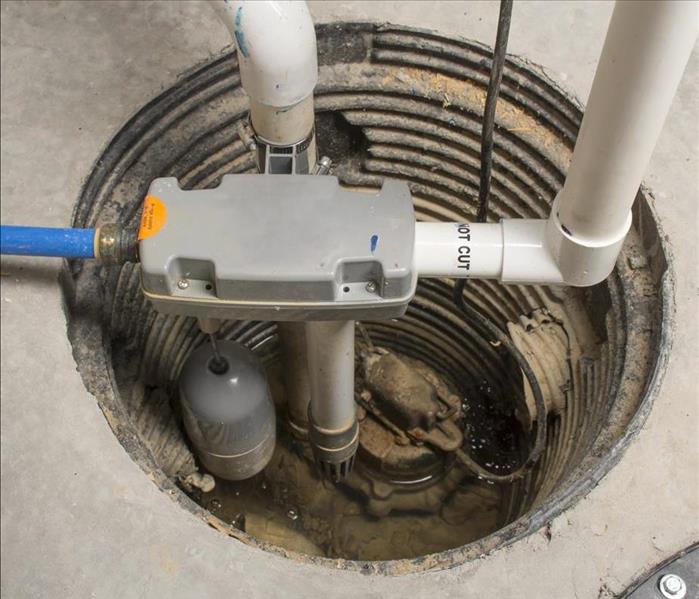 A sump pump can help to remove water from your home.
A sump pump can help to remove water from your home.
Sump Pump Maintenance Measures
Homeowners depend on sump pumps to prevent water from accumulating in basements or crawl spaces. These pumps cannot work without a power source and functional, unobstructed components. Perform the following pump maintenance measures several times a year to ensure that the sump pump in your home will function properly in the event of a flood.
Check Power Sources
Sump pumps should have primary and emergency backup power sources. Test both to ensure that the pump will work regardless of whether the power is on.
- Make sure the pump is plugged into a functional ground fault circuit interrupter, or GFCI, outlet.
- Check the power cord for damage.
- Replace a backup battery at least every two to three years.
These measures can keep the pump in your home running reliably and safely.
Clear Debris
Debris may accumulate in several parts of a sump pump. Clear clogs when you perform pump maintenance.
- Check the intake screen for blockages and remove debris.
- Clear out the pit and make sure the float is functional.
- Eliminate obstructions in the discharge pipe and vent hole.
Dirt, gravel, and other types of debris can force a pump to work overtime to drain the basin. This will put more stress on the pump machinery and increase the risk of an overflow.
Test the Pump
Make sure the pump is working by filling a bucket with water and dumping it into the basin. The float should trigger the pump to activate, and the water should drain. If the pump does not activate, check the float and power source. Schedule a repair if you cannot determine the source of the problem.
A sump pump can help to remove water from the basement or crawl space of your home. Pump failure or malfunction can lead to flooding. Clean up and repair damage by hiring residential mitigation and restoration experts in Prairie Village, KS.
Weather and Your Business: Understanding that Flooding May Be the Least of Your Concerns
11/11/2021 (Permalink)
 Commercial storm damage in Leawood, KS.
Commercial storm damage in Leawood, KS.
Weather and Your Business
Many building owners worry about flood damage, but a flood is not the only problem caused by storms. Storms produce a variety of elements that can be equally unfavorable to a property, and as a property owner or manager, you may want to be aware of each.
1. Water Damage
Floodwaters are only one type of water damage, and it is not the most common. Most damage stems from persistent leaks or holes in your roofline. These issues cause significant loss to occur over time. Leaks can cause sagging of ceilings, rotting out of joists, and even the spread of molds and mildews. Additionally, while not necessarily storm-related, persistent leaks from pipes can cause the pipe to corrode and fail, resulting in a flood.
2. Hail Damage
While flood damage can be a threat, hail damage may pose a more imminent concern. Hail occurs when temperatures allow for rain to develop into large chunks of ice, sometimes resulting in baseball size masses. These pieces of ice can cause significant property damage, from broken windows to holes in your roofline. Inspecting your property after a hail storm should be a top priority.
3. Wind Damage
The most common cause of storm damage is the wind. Wind damage can peel back siding and roofing shingles, and it can launch random debris, like sticks and lawn ornament, making them volatile projectiles. In high wind situations, property managers should keep employees and clients clear of windows.
4. Renovating the Damage
It may be wise for property owners to plan ahead. Some restoration companies in Leawood, KS, provide an emergency planning service for businesses. This service may include an initial analysis of your property and a customized plan for restoration and recovery in the event of a disaster.
Flood damage may be a concern for a property owner or manager, but storms can produce hail and high winds that can be equally damaging to property. Granted, water damage is the most common cause of property damage, but even that is not only caused by flooding.
The Most Effective Sandbag Alternatives
10/26/2021 (Permalink)
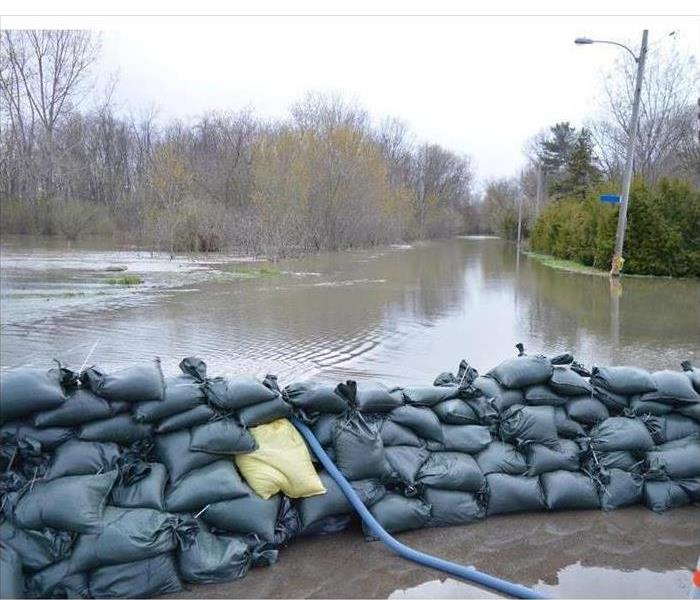 Sandbags for flood defense.
Sandbags for flood defense.
Sandbags can be heavy and messy to fill. Commercial property owners seeking more convenient ways to limit flood damage should consider one or more of the following sandbag alternatives.
Absorbent Materials
Some materials are designed to absorb fresh or flood water and act as barriers. Several styles for absorbent flood control are currently available:
- Crystallized polymer
- Powder-filled barriers
- Self-inflating sand-less bags
These porous flood dams are intended for one-time use and should be disposed of after each flood event. All of these options are easier to deploy than sandbags.
Water-Filled Barriers
Filling a water barrier can be easier than filling a sandbag. There are several different styles of water-filled barriers to choose from:
- Baffle systems
- Cofferdams
- Modular blocks
- Tube designs
These designs are available in a wide range of sizes. Unlike some flood control materials with fillers that become contaminated, these barriers can be reused multiple times.
Self-Stabilizing Barriers
Self-stabilizing barriers are easy to use to keep flood waters away from a structure. Some of these options are better suited for blocking entrances or windows, while others can be set up in longer runs to keep flood water out of a larger area. Most of these designs can be reused many times.
Levee Machines
Machines are also available to quickly fill bags with sand. The same materials used to make sandbags are needed, with the exception of a shovel. It will also be necessary to either hire or train a crew to safely use this machinery prior to a flood.
All of these sandbag alternatives are relatively easy to use. A property owner may want to invest in a reusable flood prevention solution to limit the amount of water that enters a commercial structure in Leawood, KS. If water breaches the barriers and causes damage, contact a flood damage mitigation and restoration company.
What You Need to Know About Home Sewage Backups
8/5/2021 (Permalink)
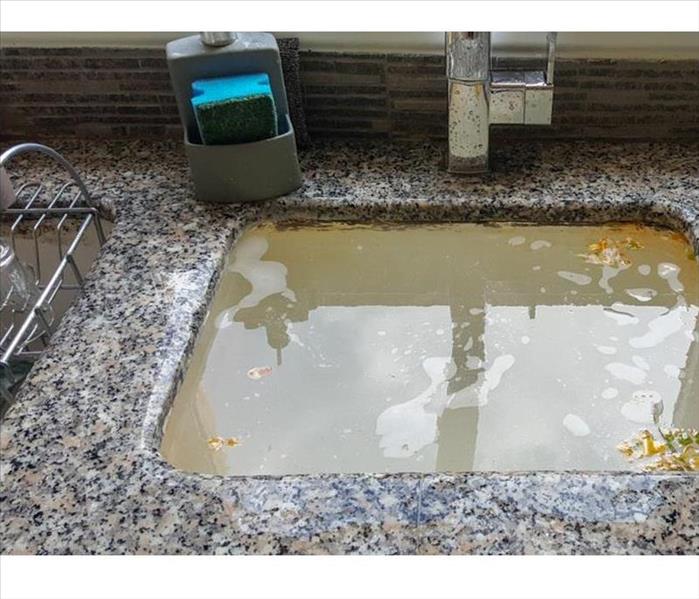 If your sink is overflowing that means you have sewage backup in your home.
If your sink is overflowing that means you have sewage backup in your home.
What You Should Know About Sewage Backups at Home
Sometimes a sewer system in Leawood, KS becomes overwhelmed, as in the case of a storm, and there isn't much you can do to stop it. There are often there are some subtle hints of the problem before it happens. Here are some things you should know about a storm-related sewer backup.
Increase Your Awareness
Sometimes rain is just too much and too fast, dumping large volumes of water on a sewer system. This is one reason that a sewer backup can happen in a home. The problem is compounded when the sewage system isn't operating at its best, but how do you know something is afoot? Well, be sure you don't dismiss some foretelling signals such as:
- Sewer gas odors
- Gurgling or bubbling in drains, sinks and toilets
Call a professional as soon as you notice these clues, so the next bout of rainwater doesn't cause a major backup. If you are on a septic tank, you most certainly are responsible for any maintenance, but call your local municipality first for a sewer line problem. It may be your responsibility depending on where the problem lies.
Clean the Mess
When you do have a sewage backup that contaminates your home, you need to make sure the cleanup is done carefully. The first step is always to solve the problem that led to the backup to prevent additional contamination in your home. "Black water" is the worst category of flood water because the flood has harmful bacteria and other pathogens. This kind of flood requires special cleaning.
A professional water remediation specialist can clean a sewer backup safely and effectively. They know porous materials are best removed and disposed, but they are also able to effectively clean other parts of your home with antimicrobials to keep your family safe from the contaminated water. Experts have access to specialized equipment and training to make sure your water damage is completely clean to prevent mold growth.
Commercial Storm Restoration: 5 Things Owners Should Expect To See
5/15/2021 (Permalink)
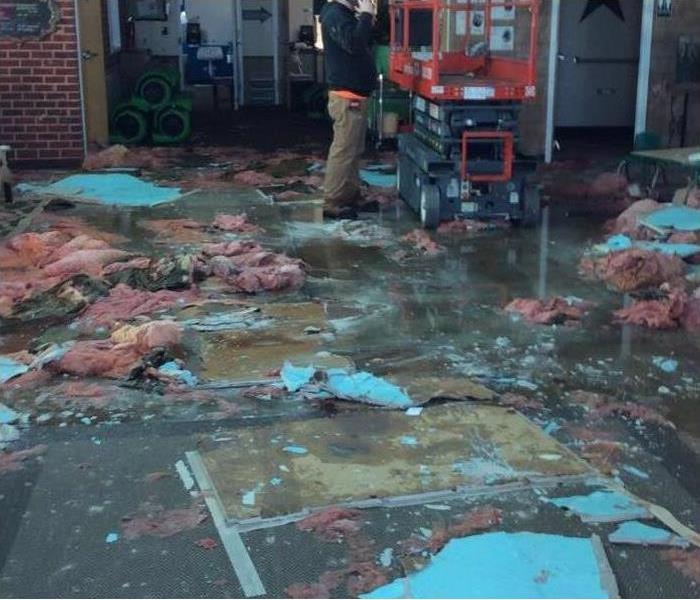 Storm damage in a daycare.
Storm damage in a daycare.
Commercial Storm Restoration
When a powerful weather system impacts an area, commercial owners are likely to require water and storm cleanup procedures. Whether from an internal flood or roof leak exposure, properties may incur immense damage. A water restoration company should attend to the premises, providing several means of assistance, including drying and tear out procedures. As a proprietor, expect to witness the following five things.
1. Methodical Testing
Not all water damage is the same. Anytime moisture saturation occurs, it's essential to understand the source and how it impacted the facility. A remediation team of certified professionals takes samples of the air and structure. These collections provide valuable information about what may be growing within the rooms and how to treat the location correctly.
2. Minimize Movement
If something is harboring inside the walls, it may migrate through the air or by a person. Barriers should be established to prevent people from entering and leaving often. Negative air chambers may be used to prevent air contamination. Signs and visible blockades are put up to keep others from walking into the zone.
3. Various Drying Efforts
Dampness sets into porous materials, especially the floor and wall. The team must air out the space to prevent rot and bacterial and mold growth. The crew brings in industrial dehumidifiers, which extract humidity. They then perform flood cuts in which they tear out at least 12 inches of drywall above the flood line. This step reduces fluid amounts and improves air circulation within the wall.
4. Content Evaluations
Some items may be salvageable. Employees look through the fixtures, electronics and paperwork. Using effective and highly sophisticated technology, they may be able to clean and repair some possessions.
5. Rebuilding and Replacing
Once the impacted section has been sanitized, storm restoration starts. The workers fix the walls, install the new carpeting. They also patch and paint the walls.
Commercial owners should understand the need for stages. Both drying and tear-out processes prevent future complications. Take care of things now to avoid trouble later.
What You Need To Clean After a Flood
1/14/2021 (Permalink)
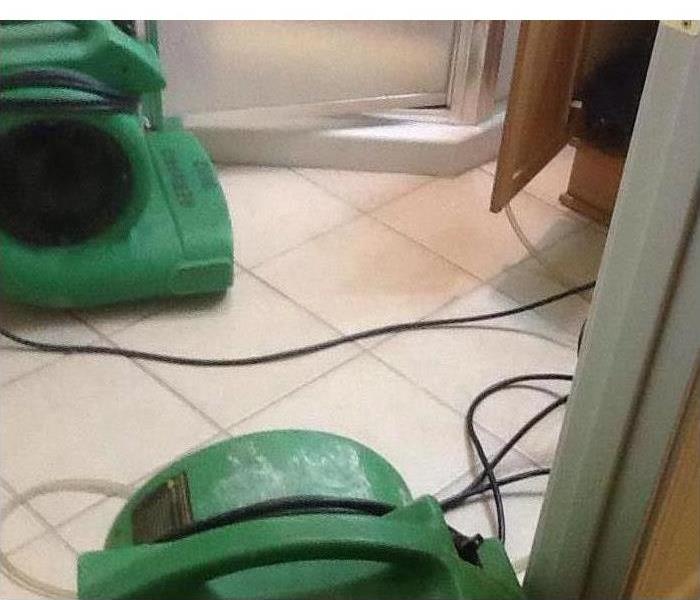 Storm damage restoration in Leawood, KS
Storm damage restoration in Leawood, KS
What You Need To Clean After a Flood
It's no secret that flooding can cause mold, mildew, and other damage to your home and belongings, but some of the things that need to be cleaned may surprise you. Adhering to these cleaning requirements can help keep you safe and prevent damage.
For a thorough flood clean, you should treat all surfaces:
- Wood
- Carpet
- Vinyl
- Fabric/upholstery
- Kitchenware
- Walls
- Cabinets and counters
Before disposing of cherished or expensive belongings, you can check with a water damage restoration service in Leawood, KS, to determine if they are salvageable.
Walls and Flooring
Wallboard and plaster may have to be removed and replaced if the water was contaminated. If the water was clean, you may be able to cut a small hole at the top and bottom of the wall to allow water to drain and air to circulate.
Different types of flooring have different cleaning requirements. If possible, the carpet should be removed and taken outside immediately. You can then rinse it off, clean it with a flood disinfectant and allow it to fully dry. Tile and vinyl floors may trap moisture in the sub-floor, so they should be removed to allow air to circulate. Hardwood floors can buckle or crack due to water exposure and drying. You can mitigate buckling by removing some boards while the floor dries. Once wood, tile or vinyl floors have dried completely, they should be disinfected.
Fabric and Upholstery
Anything absorbent, such as upholstered furniture, should be considered contaminated. Such items should be taken outside to dry immediately. If you wish to keep them, you should have them cleaned by a professional restoration service.
Miscellaneous
Other surfaces, such as countertops, should be dried and then cleaned with flood disinfectant. Some items, such as dishes and glassware, can be submerged in cleaning solutions.
Following cleaning requirements for walls, flooring, fabric, upholstered furniture, and other surfaces can mitigate the risk of mold growth if you act quickly.
How You and Your Town Can Prevent Flood Damage at Your Business
11/13/2020 (Permalink)
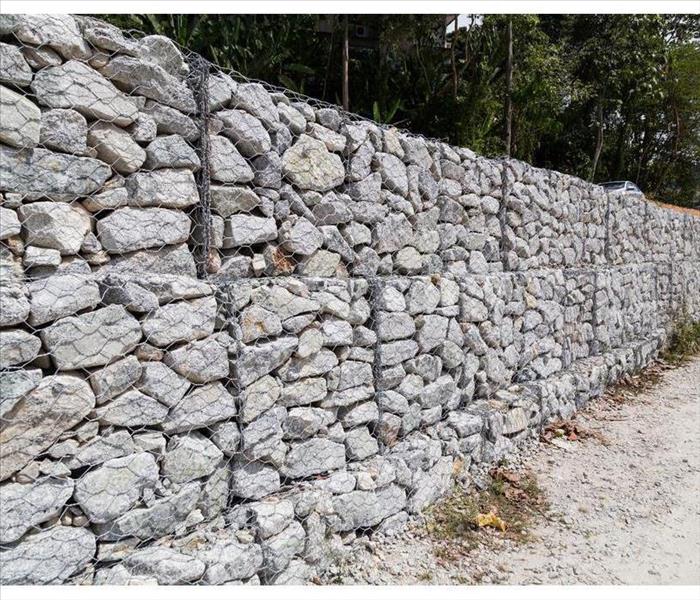 Sea walls can prevent flood damage
Sea walls can prevent flood damage
Ways That You And Your Municipality Can Protect Your Business From Floodwater
When you own a business in Overland Park, KS, you need to take various proactive flood prevention measures. Fortunately, you can share this responsibility with the city in which you operate. Here are some crucial ways that you and your municipality can protect your business from floodwater and minimize damage and disruption.
Install Structural Barriers
Most city or town municipalities situated near water have infrastructures in place to prevent flood damage, such as:
- Dams
- Levees
- Sea Walls
- Water Barriers
Of course, when storm conditions are severe, these measures may not be enough to prevent large quantities of water from flooding your business. You can supplement these measures with moveable water barriers, absorbant sandbags, moveable dams, water shields and water gates.
Plant Vegetation
Trees and other forms of vegetation are an excellent natural flood prevention method with proven results. As roots grow into the ground, they create open spaces within the soil that become a natural water drainage system. Trees also capture rainwater on their leaves and branches where it evaporates before it enters the ground. Many municipalities plant trees to support their flood control efforts. You can also increase the number of plantings on your building's surrounding landscape to reduce the risk of flooding.
Address Sanitation
Flood water carries unsafe bacteria, microorganisms, industrial waste and other contaminants. When water enters your building, it can quickly overtake everything in its path. Further damage may be due to mold formation from stagnant water. A flood restoration company can perform flood cleaning to extract contaminated water and restore your business's sanitary conditions. If mold has formed, powerful air filtration methods can remove spores from the air to restore a safe environment. Municipalities that provide separate rainwater and sewer pipes can reduce the incidence of sewage-filled floodwater in your building.
A flood can significantly impact your business in Overland Park, KS, but taking proactive flood prevention steps can support your local municipality's efforts to decrease the flood risk.
What are the Steps of Filing a Flood Insurance Claim?
10/27/2020 (Permalink)
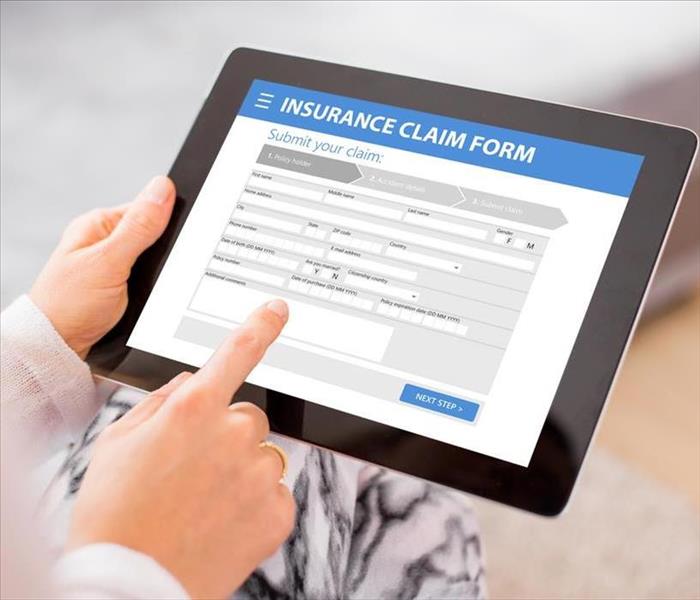 Insurance claim form
Insurance claim form
What To Do When Your Home Sustains Flood Damage
After sustaining flood damage to your home in Overland Park, KS, you might be wondering what you should do first. Here are the steps of filing a flood claim with your insurance company.
Begin Cleanup
Call your insurance company to initiate the claim process. Take detailed, dated photos and video of damage for documentation. Then, start cleanup right away before water and mold damage has time to set in. Within hours, water will seep into places such as:
- Building structures
- Insulation
- Flooring
- Carpets
- Furniture
A storm remediation company can help you begin the process of extracting water from your home. Technicians are able to respond immediately, using advanced equipment to dry furniture, belongings and building structures. They can also inventory and store any furniture or belongings that must be removed from the home.
Keep Damaged Materials
You can begin the cleanup process without waiting for the insurance adjuster. As you clean and make temporary repairs, keep damaged items and replaced parts until the adjuster has a chance to view and document them for your insurance claim. Also, be sure to keep copies of all receipts and work estimates so you can provide them to the insurance company. These documents will be vital as the company processes your claim.
Sign a Proof of Loss Statement
After the adjuster goes through each room of your home and documents damage, you will need to sign a proof of loss statement. This is an official form that lists evidence and estimates of the present value of loss to the policyholder. The insurance company uses this form, along with supporting documentation such as receipts, to determine liability. After the form is completed, the company will review your flood claim and respond accordingly.
It’s helpful to know ahead of time what to do when your home in Overland Park, KS, sustains flood damage. Keep a copy of your policy, along with important phone numbers, so you will be ready if you need to file a flood claim.
How To Protect Your Business Against Rising Flood Waters
9/1/2020 (Permalink)
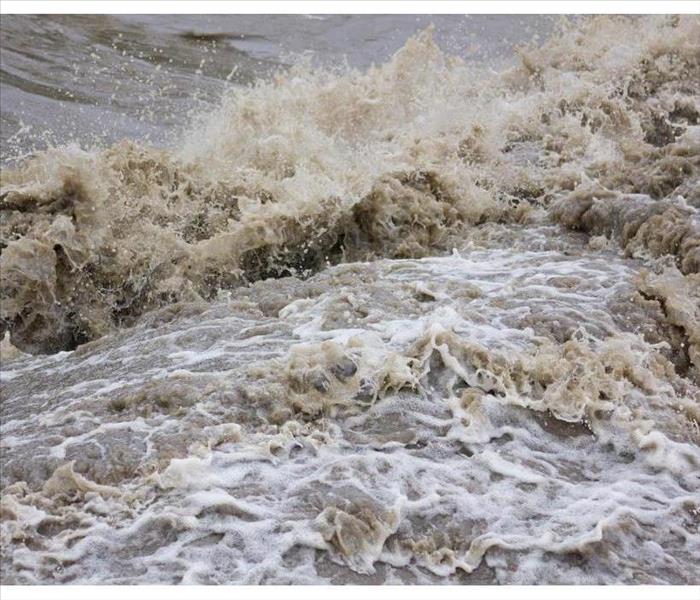 Floodwaters in Prairie Village, KS
Floodwaters in Prairie Village, KS
Does Your Company Operate Out Of A Flood Zone?
If so, flood damage is likely a significant concern. Many businesses lose thousands in equipment damage and recovery costs every year because they were not prepared for flooding. If rising waters concern you, then reach out to a local storm remediation specialist in Prairie Village, KS, to discuss preventive options.most of these companies will suggest four potential methods for securing your business.
1. Move
Moving your company because of potential storm damage may sound ludicrous, but it makes sense, especially for areas more susceptible to frequent flooding. By moving your facility to a less volatile flood zone, you reduce your risk of recovery expenses and property loss. If you do not want to move out of the area, consider finding a building on higher ground.
2. Build Barriers
Flood damage is a result of rising water levels. Thankfully, it is possible to limit the water's ability to reach your facility by building Barriers around the property. While you can install permanent Barriers, the more popular method is piling sandbags around the facility or vulnerable entry points. The bags act as a deterrent or diverter for the floodwater, protecting your building.
3. Work Above Water Levels
If your facility has a second floor, then consider moving all sensitive equipment to that level and working from there, especially if you know a flood is coming. While it is not necessary to keep equipment on a higher floor permanently, you should move it when a flood is imminent, limiting the expense and difficulty of data replacement and recovery.
4. Install Necessary Equipment
You can install plumbing devices to limit the potential damage of a flood. Backwater valves and sump pumps are two pieces of equipment that help to reduce flood risk.
If you are concerned about potential flood damage, then take appropriate preventative action. Contact a storm mitigation company to discuss specific measures with your facility.
4 Ways To Prevent Residential Flooding
8/12/2020 (Permalink)
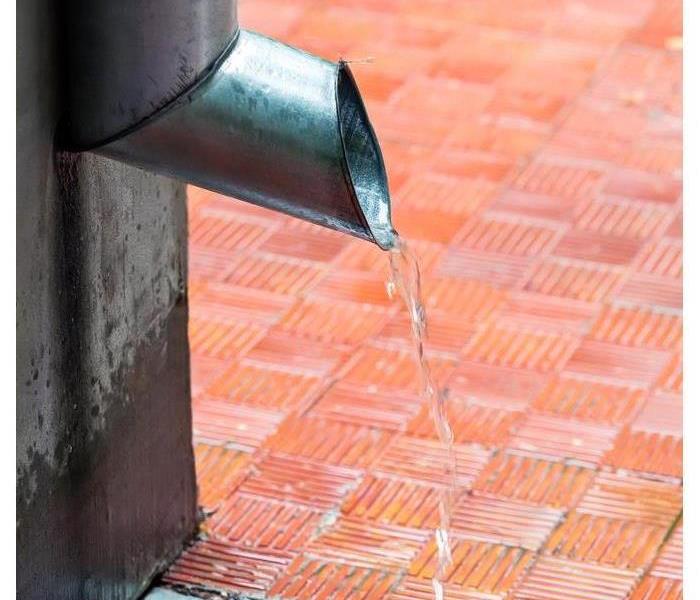 Make sure downspouts are extended to at least three feet away from your house to avoid flooding in your home
Make sure downspouts are extended to at least three feet away from your house to avoid flooding in your home
Four Ways To Protect Your Property By Making Changes To Your Landscape
Outside flooding is common after a heavy storm. When water does not have vegetation to slow it down or porous surfaces to sink into, floods can move quickly across your yard. Unfortunately, fast-moving water can destroy your landscape. Perhaps even worse, water can pool near the foundation of your home and cause damage to the inside. Here are four ways you can protect your property by making changes to your landscape.
1. Rain Gardens
Rain gardens can be an aesthetically pleasing way to give water a place to pool during a rain storm. Use native plants to make an effective and low maintenance rain garden. Since water will dry up around the edges first, place the plants that are the most water tolerant toward the middle of the garden.
2. Mulch
Light mulch, such as pine, can be swept away and scattered across your property during outside flooding. Heavier mulch is much less likely to be disturbed during a storm. Mulch made from man-made materials or hardwood is both good options for areas with heavy rain.
3. Rain Spouts
When solutions for rain drainage are not properly planned, moisture can pool around the foundation of your home. Water against the side of your house can lead to unwanted moisture in your basement or crawlspace. By using rain spouts that extend several feet from your home, you can minimize the chance that water will gather near your foundation.
4. Green Roofs
If you have a flat or gently sloped roof, you can install special modular units that are covered with vegetation. These living roofs absorb much of the rain water and contain a waterproofing membrane that protects your home. Green roofs are also reported to lower electricity costs and regulate the temperature inside your home.
Luckily, there are measures you can take to reduce the likelihood of outside flooding. However, problems can still occur. If you have experienced flood damage in Prairie Village, KS, a professional flood remediation company can help to quickly restore your home to its pre-flood condition.
Landscaping Tips to Prevent Flooding
4/29/2020 (Permalink)
 Rain garden
Rain garden
Tips to Prevent Flooding
Heavy rains can mean big troubles for homeowners in Prairie Village, KS. While there are many ways to reinforce basements, foundations, and other structural components, which often can be expensive, landscaping is another way to keep outside flooding from coming in. Along with minimizing damage from a rain storm, add some natural elements can also enhance a home’s curb appeal.
Changing the Landscape
Rain drainage is the main culprit behind water entering the home. Along with ensuring gutters are regularly clean and free from blockage, nature itself can be used to assist stormwater runoff.
Swales: These are depressions in the ground that contour around a slope to direct water to another place. They can be natural or manmade and rely on gravity to move water. Since they are not designed to absorb water, rocks and plants can be used to smooth the flow as the water heads to an ideal location.
Rain Gardens: Often the end source of a swale, these provide a place for water to pool and slowly enter the soil. They can range in size, depending on a home’s needs, and can be maximized by using native plants that require minimal maintenance.
Greenery: The addition of perennials and shrubs not only add curb appeal, but they also work to absorb stormwater runoff. Work with a local garden center to find ideal moisture-tolerant plants.
Additional Materials
When outside flooding is an issue, materials are available to enhance landscaping and keep the water going where it should. It can be as simple as added heavy mulch around the foundation in areas where the soil is visible or investing in pervious paving solutions that can help create a patio oasis and reduce standing water.
In extreme cases of outside flooding, keeping the water out may be impossible and require the assistance of a flood and stormwater specialist. Making a few landscaping changes may be a solution to minimize the damage.
Create a Continuity Plan for Your Business
4/9/2020 (Permalink)
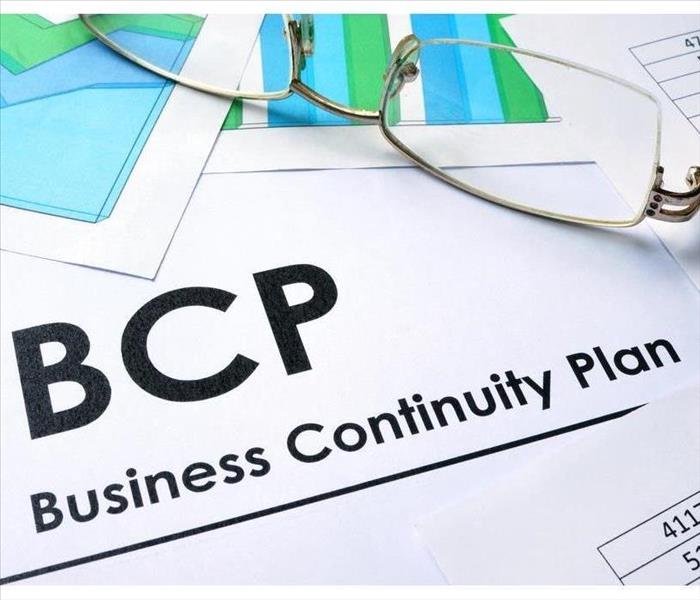 Creating a business continuity plan will help mitigate the costs in case of an emergency
Creating a business continuity plan will help mitigate the costs in case of an emergency
When business operations are interrupted by weather events or other emergencies, your company in Prairie Village, KS can incur unforeseen expenses and reduced revenues. It’s important to be as prepared as possible so that your company and employees are protected. Creating a business continuity plan will help mitigate the costs in case of an emergency.
Create a Business Impact Study
The first step in developing a business continuity plan is to conduct a risk assessment. Include managers or other members from each department to complete the assessment. Risks to be considered include:
- Fires
- Storm damage events, such as flooding, tornadoes, and hurricanes
- Utility outages or cyber attack
- Hazardous material spills
- Supply chain interruptions
The risk assessment should also include the operational impact and financial consequence of each risk. Using a numerical formula to rate the impacts will identify those areas of highest concern.
Develop Strategies for Recovery
The next step is to identify the resources that will be needed to mitigate the recovery. Resources include:
- Employees who will help with the recovery, including what their role will be
- Technology, such as computers and software
- Office furniture and other equipment
- Inventory and production facilities
- Supply chain services
- Utilities
The recovery strategy must also include a gap analysis. This analysis will identify the gaps between the requirements needed for recovery and the adequacy of the current system.
Design a Plan
Once you have identified the risks and corresponding impacts, along with the resources needed for recovery, it’s time to develop the plan. Steps include:
- Assigning recovery teams
- Designing the framework for the plan, including relocation arrangements
- Writing procedures for continuity and disaster recovery
- Completing and approving the written plan
Test the Plan
In order for the plan to be successful in an actual emergency, it must be tested. Develop procedures for testing the system and conduct training with all employees.
Every business owner needs to be prepared in case of an emergency and a continuity plan will help to ease concerns.
Residential Storm_67_Mold Growth After a Flood
11/16/2019 (Permalink)
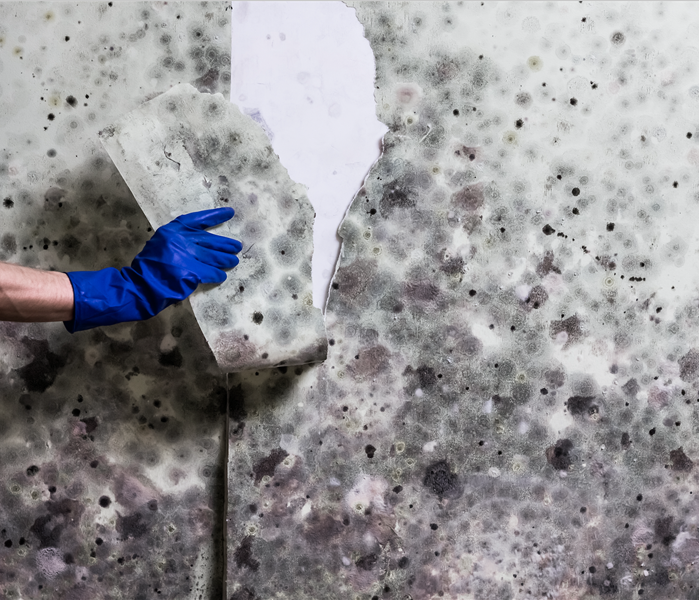 Mold removal in an Overland Park, KS home
Mold removal in an Overland Park, KS home
If your Overland Park, KS, home experiences flooding, mold can begin to grow very quickly. Fortunately, it is possible to prevent mold growth after a flood.
Flood Cleanup Process
Mold growth can begin in as few as 24 hours after flooding, so it is important to clean up the affected areas as quickly as possible. The following steps outline the flood cleanup process:
- Assess and document the damage.
- Remove standing water.
- Dry out soaked items.
- Sanitize affected objects.
- Restore and replace damaged items.
The most important step in preventing mold growth is drying out the property. For standing water, you may need special pumps or vacuums to extract the water. To dry out the remaining water, you can open windows and doors if the humidity outside is fairly low. Otherwise, you can use fans and dehumidifiers. After everything is dry, you will need to disinfect all affected objects. Then you can begin restoring and replacing damaged items.
Mold Removal Process
If you are not able to dry out your belongings quickly, you may end up dealing with a mold infestation. Every situation is different, but the following steps outline the general mold remediation process:
- Contain the mold.
- Filter the air.
- Remove objects that cannot be salvaged.
- Kill the mold on remaining items.
- Repair or replace mold-damaged items.
Because mold spreads so quickly, it is important to keep the mold contained while you work. In many cases, this means simply turning off the heat or air conditioning. Then you will filter the mold spores out of the air using a HEPA filter and remove objects that are too mold-infested to be fully cleaned. The remaining objects should be sanitized with an appropriate cleaner. After everything is free of mold, you can repair and replace mold-damaged items.
Flood damage and mold growth may seem overwhelming. Fortunately, there are restoration specialists that can help you get your home back to normal quickly and safely.
5 Steps for Developing a Business Continuity Plan
10/30/2019 (Permalink)
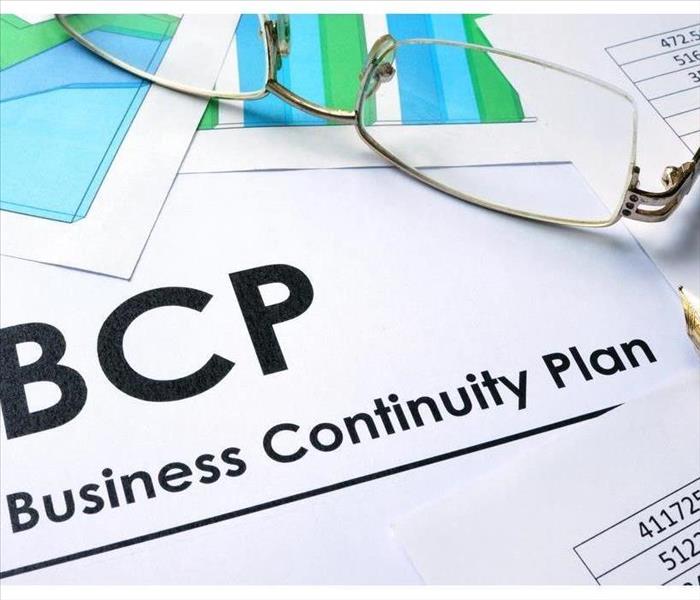 Hopefully putting a continuity plan into action never has to happen
Hopefully putting a continuity plan into action never has to happen
The Development of a Plan Should Include Five Elements
While you hope your business in Leawood, KS, won’t be hindered by flooding, storm damage or other natural or accidental disasters, planning for the worst can reduce the potential of disastrous downtime. Successfully navigating the unexpected and recovering from it as quickly as possible is the key role of a continuity plan. The development of a plan should include five vital elements.
1. Risk Assessment
The first step in a continuity plan is evaluating what potential risks your business or property may face. A walk-through of the property and understanding of a building’s location can help you assess what you prioritize what you may face.
2. Impact Analysis
After prioritizing, it’s necessary to look at everything it takes to keep your business running. From security to IT to vendors, reviewing how every step works will help you prioritize and develop strategies to keep them up and running or get them back to running quickly. This includes determining how long your business can run while not operational.
3. Development
Preventing disruptions is the ultimate goal. After the first two steps, you may find potential structural issues that can be repaired before an incident happens. For nature related events, it provides a means to strategize ways to protect resources, employees and tenants while minimizing damage. Part of this plan may involve setting up a response team as well as having a professional service already researched to assist with cleanup.
4. Implementation
This vital step involves sharing the plan with everyone involved. Every employee, tenant and even vendors should know what to do in an emergency.
5. Review
The best plans only work if the people involved have a clear understanding of what to do. A quick memo can easily be forgotten six months down the road when an event happens. Doing a run-through throughout the year will ensure key players know their roles and provide insight on ways to optimize the plan.
Hopefully putting a continuity plan into action never has to happen. Whether small or large, having one is still the best bet in keeping your business afloat during trying times.
3 Easy Ways to Save Money on Home Maintenance Costs
9/9/2019 (Permalink)
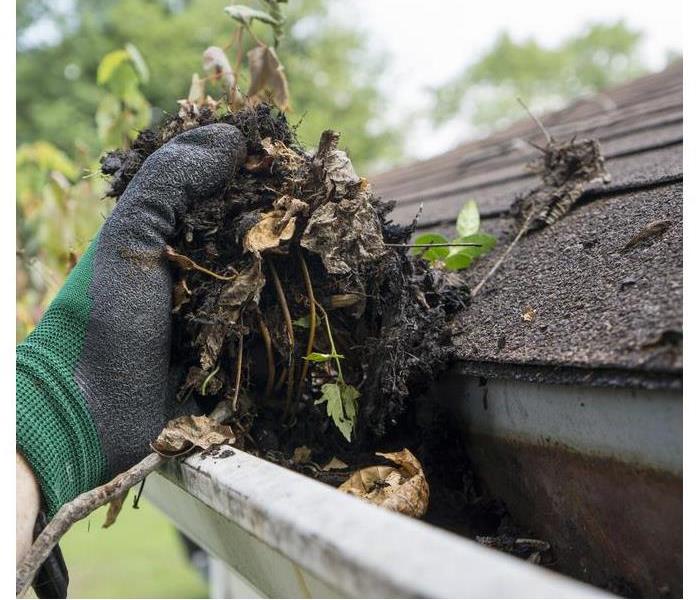 Regular cleaning of your home’s gutters can help prevent devastating damage to your home.
Regular cleaning of your home’s gutters can help prevent devastating damage to your home.
Areas to Focus on To Save You Money Fast
Maintaining your home is often regarded as one of those tedious tasks that is easy to push to the side. However, as many homeowners have learned the hard way, every dollar spent on home maintenance has the potential to save you hundreds of dollars in total maintenance cost down the line. Here’s a couple of areas to focus on to save you money fast:
Look for Leaks
Water leaks are usually simple to fix but can easily lead to disastrous results if left unattended for too long. Mold and mildew can take root and grow in wet spots in your home and can be very expensive to remove. Get ahead of mold by conducting a sweep of your home and checking all plumbing for leaks. Walk through your residence and inspect for active dripping or water stains on ceilings and walls.
It is also important to check your roof after any major weather event to make sure no leaks have sprung. In the emergency event of major roof damage, have the contact information of a roof tarping specialist ready to mitigate further damage. This is a maintenance cost worth investing in.
Assess Your HVAC System
Having a well-maintained HVAC system can save you a lot of money in the long run. Heating and cooling systems that are in tip top shape run at peak efficiency, ensuring that you get the best value out of your energy costs. Routine monthly inspection of air filters should become part of your facility management plan for your home. Performing frequent maintenance on heating and cooling systems will help prolong the lifespan of your HVAC system.
Check the Gutters
Regular cleaning of your home’s gutters can help prevent devastating damage to your home. Gutters can become clogged with leaves, branches and other debris which could lead to wood rot, pest infestations and leaks. These costs can pile up quickly and can be avoided by annual maintenance of your gutters and downspouts.
Regular maintenance may not be the most enjoyable part of being a homeowner in Overland Park, KS, but knowing that putting couple of extra dollars towards maintenance cost can save you thousands in remediation.
Minimizing the Risks of Flooding at Work
8/27/2019 (Permalink)
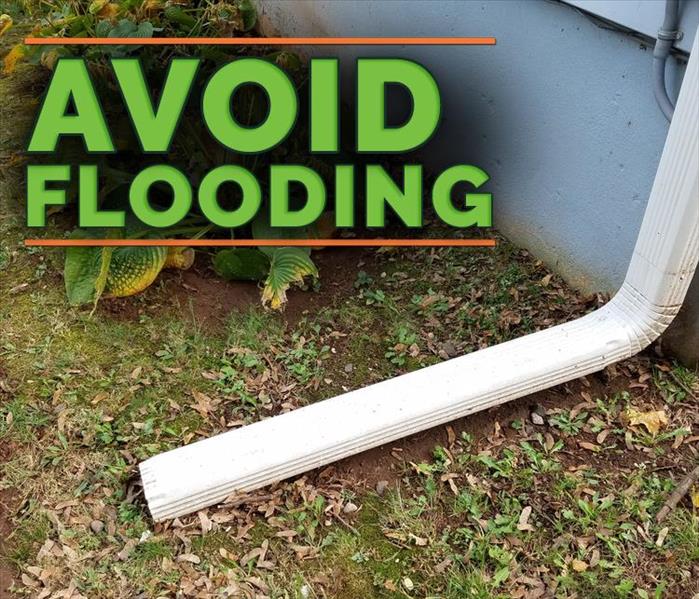 Make sure the property has functional downspouts that divert the water far from the foundation of your building
Make sure the property has functional downspouts that divert the water far from the foundation of your building
Running a business brings many challenging. Managing employees, keeping customers happy and building an economically sustainable building is always on your mind. Environmental damage to your Leawood, KS, building could be devastating. The repair and cleanup costs alone could be detrimental. Loss of work time could put you behind the competition. With a proactive attitude, you can reduce the flood damage in your workplace.
Check Out Waterproof Materials
Thanks to advances in building materials, there are several options you can explore to repel or resist water. These efforts may not completely keep an area dry, but they can be effective in helping you salvage important equipment, tools and structural components. Some items to consider include:
- Putting a layer of waterproof veneer on the walls.
- Add waterproofing to the floors.
- Waterproof furniture
Wise Selection
Lowering your risk for flood damage may start before you even open the doors of your company. Carefully choose a location for your building. By consulting engineers and other experts, you can review areas prone to floods and choose to build elsewhere. Constructing on higher ground should put you in much safer territory.
Raise Them Up
If you have experienced water issues or flooding at work before, avoid additional damage by raising bookshelves, cabinets and equipment off the ground. Often, water comes in through the floor, especially on ground or sub-ground levels.
Proper Drainage
Storm damage can be severe after heavy rainfall, especially if your building is ill-prepared to send water away. Make sure the property has functional rain gutters and downspouts that divert the water far from the foundation of your building. Check these areas regularly, especially immediately following a storm.
Though you can have peace of mind to know that qualified flood remediation specialists can help you recover from even the worst flooding, you want to avoid as much damage as possible. Be responsible and use these strategies in your emergency planning.
How To Make a Flood Damage Claim
7/11/2019 (Permalink)
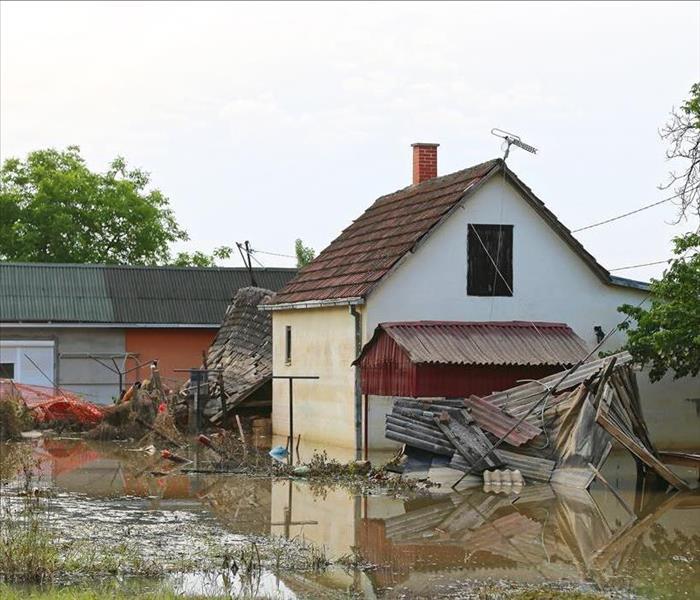 Severe storm damage to a home in Prairie Village, KS
Severe storm damage to a home in Prairie Village, KS
How to File a Flood Claim With Your Insurance Company
A severe storm can cause a lot of damage. Trees can fall, debris can wreak havoc and the ground can become saturated quickly. If your home in Prairie Village, KS, floods as the result of a storm, having flood insurance can help cover the cost of storm restoration services. The following tips can help you file a flood claim with your insurance company so that you don't have to pay remediation expenses out of pocket.
Make Important Calls
The first thing you need to do is to call everyone who may need to be involved in resolving the flooding problem:
- Government office in charge of city sewer system
- Insurance company
- Certified flood cleanup professionals
When a large portion of your area floods, it can affect the city's sewer lines, and officials need to know if you are experiencing any problems. Notifying your insurance carrier prompts an adjuster to visit your home and analyze the damage listed on your insurance claim. Arranging for technicians to arrive as soon as possible helps you prevent further water damage to your home.
Document Damage
To file a successful flood claim, you need proof of all the damage the flooding causes. Don't wait until your adjuster to arrives to document it. Take pictures and video so that you have evidence of the initial state of your home after the flood. After cleanup technicians arrive and pump the excess water out of your home, take more pictures of the water damage and make an itemized list of all the items that must be restored or replaced. Having information ready when the adjuster arrives can help you make a more detailed claim.
If the area where your home is located floods, you may not be able to avoid water damage. Knowing whom to call and the immediate steps to take can help you file a successful flood claim.
Tips for Flood Prevention in Your Community
5/22/2019 (Permalink)
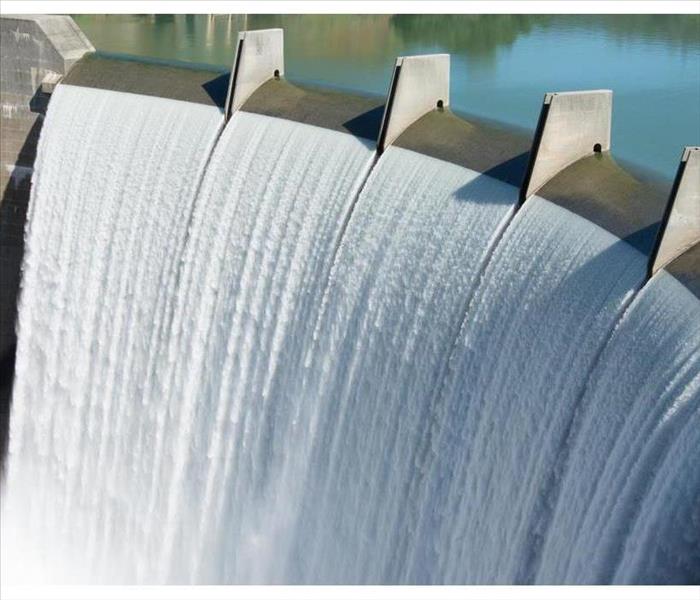 Dams are used to hold excess water
Dams are used to hold excess water
So far, it's impossible to prevent rain from falling and high waves to overflow their banks. The control of natural events is still out of the hands of humans. However, there are some flood prevention tactics that can keep properties safe from damage. You may recognize some of these methods in action in Overland Park, KS. Town planners are often responsible for actions, such as
• Keeping waterways clear
• Installing and maintaining drainage systems
• Clearing litter and debris out of water ways and drainage systems
Coastal Defense Walls
Communities situated near large bodies of water may have sea walls, tide gates, and sand bag barriers in place. These structures are intended to prevent tide and its waves from bringing too much was on shore.
Water Retention
In many communities, retaining walls such as levees, lakes, dams, retention ponds, and reservoirs are used to hold excess water. These are especially helpful under flooding conditions. Today, many of these solutions are structured to function as attractive landscaping, as well as providing flood prevention.
Detention Basins
This solution involves a small reservoir that is connected to a waterway. The reservoir serves as temporary water storage until the water is able to flow back into the waterway. It also holds water and gives the community a longer amount of time to evacuate when necessary.
Vegetation to Prevent Erosion
Bare soil is much more likely to wash away than land help in place by trees, shrubs, and grasses. You may see vegetation throughout your neighborhood that will break up the flow of moving water, reducing erosion, and limiting the flow of flood waters.
Education
If you're not sure what you can do to reduce the necessary flood cleanup and damages around your commercial property, contact water and flood remediation professionals in your area for more advice. These professionals can offer advice about the impact of litter and the ways that high water is most likely to affect your property.
What steps can you take to improve flood prevention? Make your voice heard as a business owner. Engage in civic planning and take time to learn more about flooding.
3 Steps To Minimize Mold Damage After a Flood
4/30/2019 (Permalink)
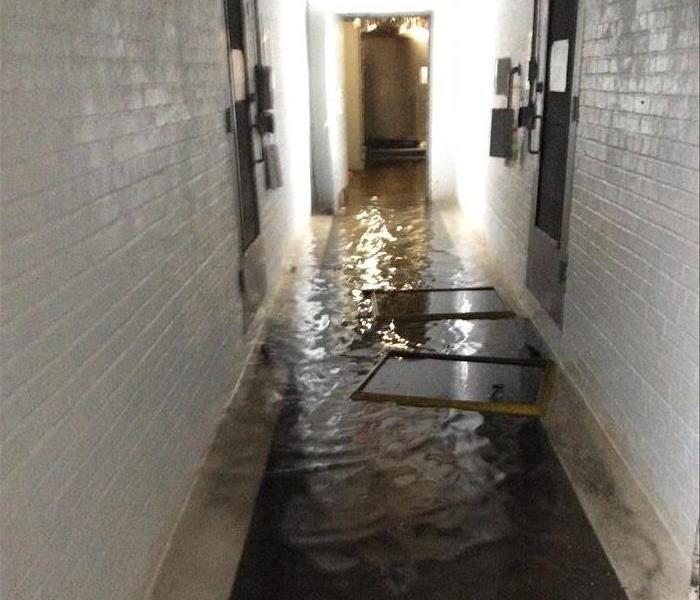 Flood Damage in a local Overland Park, KS, facility.
Flood Damage in a local Overland Park, KS, facility.
Severe weather happens, and as a result, homes often flood. The inevitable moisture and water from flooding can lead to mold growth. Mold usually will flourish if moisture is allowed to linger in the floors, walls, wood, carpet or basement of your home. It can be imperative to know what to do in the critical hours and days directly following a flood.
3 Steps To Minimize Mold Damage After a Flood
1. Move Quickly
Generally, mold begins to grow within one to two days after a flood in Overland Park, KS. The cleanup and damage mitigation process should start immediately to prevent further damage to your property. Although mold can occur naturally just about everywhere, spore may thrive on moisture and grow large colonies rapidly after a flood. At this time, it may be a good idea to place a call to your insurance company to begin the claims process.
2. Remove the Water Source
After any flood, the first step in inhibiting mold growth is often to address the source of the water. This means taking emergency measures to protect your home from any more water intrusion if possible. With some natural disasters, you should wait for waters to recede, but if the source of water is immediately fixable, such as a roof leak, repairs should be made to stop the intrusion.
3. Begin Drying
All standing water should be removed. This water can be particularly dangerous as it feeds mold and can contain high counts of dangerous bacteria that continue to multiply as the water stagnates. A flood damage expert can begin by extracting the water from your home. If there are large amounts, the water may have to be pumped out slowly in order to maintain structural integrity.
Remove flood-damaged personal property such as furniture and clothing. Some items, such as soaked mattresses, are usually not salvageable and should be disposed of. All items to be saved should be thoroughly dried and sanitized prior to returning to the home.
Remember that mold removal is a myth because it’s everywhere in different forms. The goal is to return mold growth to normal acceptable levels. This can be accomplished through the cleanup, remediation and restoration process.
Preparing Your Business for an Impending Flood
4/30/2019 (Permalink)
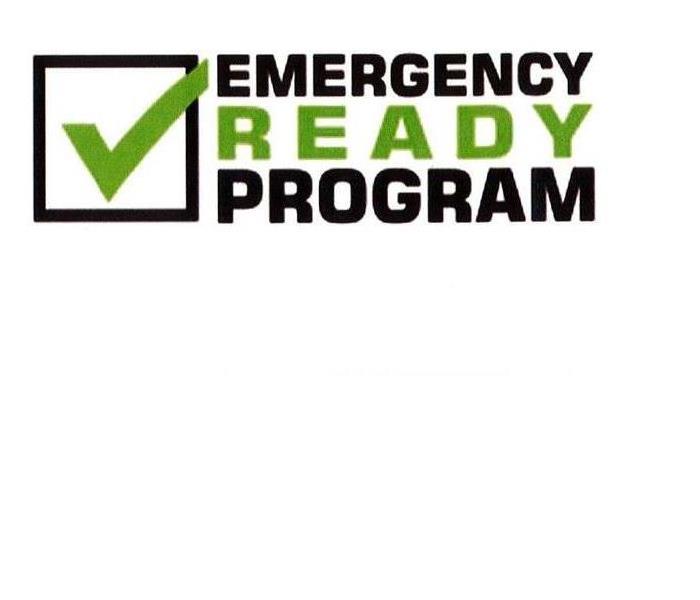 Preparation is so important for a business because it can avoid extended business interruption after the storm passes.
Preparation is so important for a business because it can avoid extended business interruption after the storm passes.
When the flooding starts, it is usually too late to protect from flood damage. The best time to prepare for a flood is before it occurs, giving you time to purchase supplies and secure your facility from disaster. The reason preparation is so important for businesses is that poor planning can lead to extended business interruption after the storm passes. Therefore, to give your business the best chance at a speedy recovery, there are a few things you should do in preparation of floodwaters.
How to prepare your Business for Flood Damage
1. Protecting Doors and Windows
Storm damage can do significant harm to your building due to high winds alone, but a flood increases the risk of damage exponentially, especially for doors and windows. The best way to protect these vulnerable points of entry is to barricade them with sandbags. The bags should be stacked a little higher than storm predictions to ensure protection.
2. Securing Furniture
Flooding can turn furniture, interior and exterior, into projectiles. You may want to weigh or chain down any outdoor furniture, and interior office furniture may be best moved to a higher level than ground level.
3. Moving Fragile Equipment
Computers and other fragile electronics and equipment should also be moved to a higher floor to ensure functionality after the flood. While water levels may not reach desk height, it is possible for them to reach outlets, sending a surge through your equipment and potentially ruining it.
While you can try every preventative measure out there, it is still possible that a flood will damage some part of your business, which is why you should consider your options for mitigating loss after a flood. A disaster restoration specialist in the Overland Park, KS, area can help you prepare an emergency action plan that goes into effect when a disaster occurs, speeding up the restoration process.
Flooding can cause significant damage to a business, and it may even result in extensive business interruption. To help counteract the potential damage and risk, a business can take the above steps, ensuring some level of protection during a disaster.
Temporarily Fix Your Wind-Damaged Roof
4/30/2019 (Permalink)
 Covering Wind-Damaged Roof in a local home.
Covering Wind-Damaged Roof in a local home.
High winds can cause considerable harm to your business’s building. What should you do after discovering a roof leak as a result of wind damaged roof? It can take days to weeks to get a roofer out to complete repairs. A compromised structure may lead to additional water damage repairs needed.
3 Steps to take to temporarily keep ongoing inclement weather from causing any more unnecessary destruction.
1. Inspect the Damage
The first action is to inspect the damage. You will need to get onto the roof safely by using a sturdy ladder. Locate the source of the roof leak. The cause may be obvious, like a visible hole, or you may have to examine things more closely. Look for areas where water may be flowing over sections of missing or damaged shingles.
2. Patch Holes
Plywood can be easily cut to cover any holes. Cut pieces large enough that your patch will extend several inches beyond the hole on every side. Then you can use roofing nails or deck screws to attach the plywood to the existing structure.
3. Cover the Surface
Large, durable tarps can be used over the patched holes and areas where missing shingles are discovered. Use the thickest tarps available. For this type of temporary fix to be effective, be certain that the tarping material goes over the roof’s peak.
Tarps should be pulled tightly and secured around the entire perimeter to ensure they don’t blow away or allow rainwater to be seep underneath. Rope or cord can be used to hold the material down, or you may choose to nail the tarps to the building’s fascia board.
Temporary roof repairs can last from days to weeks, buying you the necessary time before a permanent, professional repair can be completed on your roof leak. Safely following the steps outlined can help mitigate any additional storm damage to your business in Overland Park, KS.
Extra Steps: How To Clean Up After a Storm
4/26/2019 (Permalink)
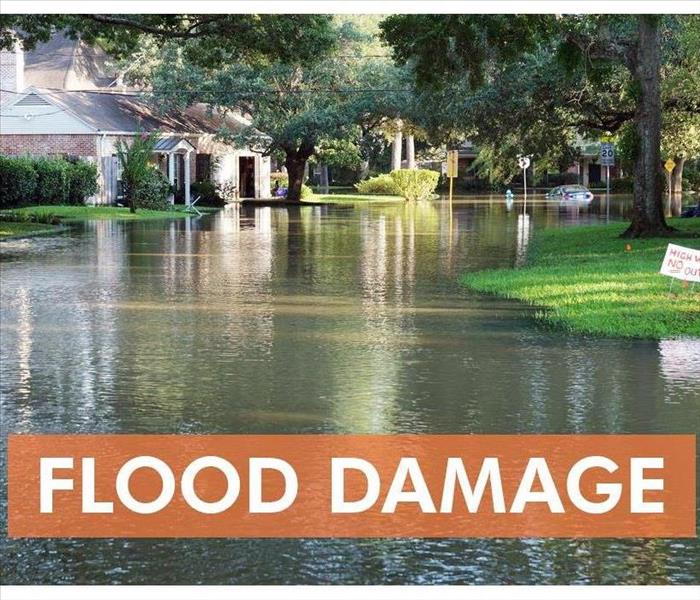 Flood damage in the Prairie Village, KS area
Flood damage in the Prairie Village, KS area
How To Clean Up After a Storm
If a pipe bursts in your home in Prairie Village, KS, you will likely have some flooding to handle. A flood from a storm, however, takes remediation to another level. Not only do you need to dry out your home, but you also will need to disinfect your home, both in areas that are directly affected and those that may be vulnerable to secondary damage.
Extracting Water
The first step to remediating any water damage is to remove the excess water from the area. With a flood with Category 1 water, the process is pretty straightforward:
- Remove standing water
- Dry remaining surfaces
- Repair or replace damaged materials
Floodwater from a storm, however, is considered Category 3 water. It is contaminated and may contain all sorts of bacteria, viruses and other microbes. If you have flooding from a storm, flood mitigation experts must clean your home thoroughly after getting rid of the water.
Disinfecting Area
Anything that comes into contact with the floodwater must be disinfected before your home is considered habitable again. Technicians use specific detergents and industrial strength cleaners to make sure all surfaces are sterilized. Then they test to ensure that the cleaners did the job well.
Cleaning Home
Even if part of your home doesn’t have flood damage, it may still be impacted and need attention. For example, it is a good idea to have technicians clean your HVAC unit. That much floodwater can significantly increase the humidity in your home, making all of it susceptible to mold growth. Cleaning and drying the ducts can discourage fungus from growing in hidden areas.
While there’s no such thing as a good kind of flooding, damage from clean water can be easier to clean up than issues resulting from storm water. Getting rid of the water is not enough; you must also make sure that your home is properly disinfected before technicians are finished with the job.
6 Things to Never Do After a Flood
9/14/2018 (Permalink)
 Floods are dangerous. Once waters recede and it is safe to return home, call the professionals for help cleaning up
Floods are dangerous. Once waters recede and it is safe to return home, call the professionals for help cleaning up
If you're dealing with a flooded home, it's understandable that you want to act fast to minimize damage. While it is correct to address it fast, you need a professional in water remediation and restoration. Flood water cleanup must be done with great care, otherwise you risk causing more harm to both your home and yourself. Your local flooded remediation team shares a few tips for what NOT to do post flood:
- Do NOT stay in your home if actively flooding
- Do NOT wade into standing water
- Do NOT touch the water
- Do NOT forgo protective gear
- Do NOT forget to call your insurer
- Do NOT forget to call your Overland Park, Kansas, water damage restoration team
It is important that you don't do any of the above, as failure to listen to the professionals could put you, your home, or your loved ones in harm's way.
Get Out of the House and Away From the Water ASAP
Depending on where the flood water came from, it could be contaminated with human feces, chemicals or other harmful materials. For this reason, you should never go anywhere near the water, let alone touch it. Ideally, if you can, get out of your home as fast as possible and call for help.
If You Must Stay in the Home, Wear Protective Gear
While you should not attempt cleanup efforts on your own, if you plan to stay in the home, make sure you're equipped with all the right protective gear. Protective gear you will need includes: flood boots (which may protect you against electrical shocks), full-body suit, gloves, and a face mask.
Contact Insurance Provider & Restoration Company
In order to be reimbursed for the water damage caused by a flood, you need to contact your insurance provider immediately. Insurance will need a projected cost of the water remediation and restoration. We offer estimates and will coordinate with insurance to ensure that the process is handled fast and efficiently so your home can return to normal. The faster you take action in contacting your insurance agent and restoration team, it could minimize damage and therefore the costs of restoration.
Avoid Mold Growth Due to Winter Flooding
7/23/2018 (Permalink)
When it's warm outside in Overland Park, KS, it's easy to forget about the risk of frozen pipes, but this is the best time of year to prevent winter flooding. Protect your pipes from freezing by learning to recognize the risks, taking preventative steps, and how to respond when pipes do freeze. Some of the most important reasons to prevent winter flooding are the risks of mold growth and property damage.
Freezing Water Expands.
If you've left a cold drink in the freezer a little too long, you've probably experienced the results of water expansion. No matter what type of container water is in, when it freezes water expands and there's a tremendous amount of pressure on the container. Even metal pipes can break, leading to flooded basements and the risk of standing water where bacteria can grow. Watch out for:
• Pipes exposed to extreme cold, such as outdoor hose bibs, water sprinkler lines, and swimming pool lines
• Water supply lines in unheated areas, such as the attic, basement, garage, kitchen, or crawl space
• Pipes running along exterior walls where there's little to no insulation
Keep Things Warm.
There are several things you can do to prevent your pipes from freezing. Once you've located problem areas, you can add insulation to the pipes. Protect them from cold weather as much as possible. For example, keep the garage doors closed to retain some of the home's warmth and open kitchen and bathroom cabinets to let warmer air circulate around the pipes. When the weather is very cold, let a bit of cold water run through the faucets. The running water will prevent the pipes from freezing. During especially severe cold snaps, leave the thermostat set to daytime temperatures at night and even when you're away from home.
Call a Professional.
Finally, if pipes have frozen, contact a professional for help. While waiting for a response, leave faucets open to allow water to flow through the pipes and use a heating pad or space heater to warm the pipes. An immediate response is the best way to avoid flooding and mold growth.
For more information, please visit us at http://www.SERVPROleawoodoverlandpark.com/.

 24/7 Emergency Service
24/7 Emergency Service






















